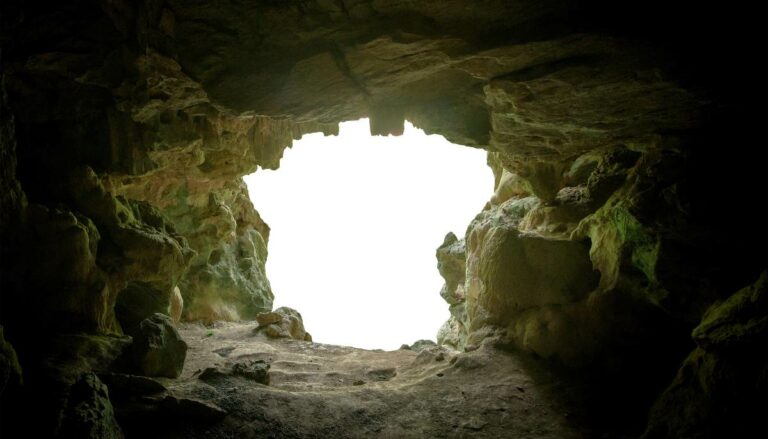What is now the world’s largest cave that has been untouched by humans for millions of years, was discovered in Vietnam revealing previously unknown animals, hidden rain forests and even its own weather system.
A new cave discovered and then lost
The finding of the world’s largest cave is actually a story of discovery and rediscovery. When the cave was found for the first time, it wasn’t explored. After the accidental discovery of the cave, it lost for almost 2 decades before being rediscovered and eventually explored.
It all began in Vietnam in 1990, Oxalis Adventure, a company that now offers tours of the area, tells the story of its discovery on their website.
What is now known as the world’s largest cave, the Son Doong Cave, remained unknown and unexplored by humans for millions of years.
A local man named Ho Khanh said he when searching in the jungle looking for food and timber he could use to earn a modest income, he accidentally stumbled upon the cave. He accidentally discovered the Son Doong Cave while searching in Phong Nha-Ke Bang National Park. He spotted an opening in a limestone cliff.
The first thing that captured his attention were clouds billowing out from the entrance. At the entrance, he heard the sounds of a river raging from somewhere inside. He was intrigued but did not explore further. Instead, he returned home and forgot about the cave. It would remain unexplored and unknown to anyone else except Ho Khanh for another 18 years.
Cave rediscovered
The Son Doong Cave was rediscovered in 2008 by Howard and Deb Limbert of the British Cave Research Association (BRCA). They were conducting exploratory caving expeditions in Vietnam. Eventually, they heard the stories about Ho Khanh and the unusual cave he discovered.
After some urging, the British researchers convinced Ho Khanh to help them search and rediscover the location of the cave. It wasn’t easy. But after several search expeditions, Ho Khanh and the team were able to find the cave again.
Exploration launched
Ho Khanh led Howard and Deb Limbert, as well as a team of other caving professionals to the opening. From there, the professional researchers completed their first survey in 2009. The researchers concluded that the cave contained the largest cross-section of any cave anywhere on Earth. They named the cave “Son Doong.”
Cave experts are now researching a connection between Son Doong Cave and neighboring Thung Cave. They say if the connection is made, Son Doong will be the largest cave in the world by volume, as well as by cross-section.
New animals species discovered inside cave
With millions of years of evolution happening inside Son Doong Cave without the interference of mankind, the researchers were about to engage in a eye-opening experience. Explorers Son Doong Cave soon realized that there was a wealth of unknown discoveries waiting.
Inside the cave, was a vast area of underground rain forests and stalagmite rock formations protruding to the height of tall buildings. The ceiling of the cave spanned 650 feet in the air, which is more than twice the height of the Statue of Liberty.
But one of the most exciting finds was the discovery of new species. Living in the cave were at least seven new species of never-before-seen animals that had not been found or seen anywhere else in the world. Howard Limbert and his team, along with scientists from Hanoi University, made the discovery.
Rare plants species found
Another unique feature is that the cave has two dolines, areas where the cave ceiling collapsed millennia ago allowing light to enter the cave from skylights more than 650 feet above. Over time, these dolines let in light, rain, soil, and seed, all of which combine to create a micro “jungle.”
At the base of these dolines, micro-jungles are present that contain countless rare plants, which in turn surround trees that stand up to 160 feet in height.
The cave also features expansive openings where sunlight beams into the cave, providing light to the jungles, as well as illuminating stalagmites, huge rock formations, which rise from the floor to skyscraper-like heights. The stalagmites are created over time by the accumulation of material deposited on the floor from ceiling drippings.
Cave has its own weather
Another of the strange phenomena discovered inside the cave was that it produces its own weather system.
The original event that drew Ho Khanh’s attention to the cave was the sighting of clouds that were billowing out from the opening. Explorers eventually discovered that the cave did indeed have clouds – formed by its own weather system.
“When the heat reaches inside the cave, it evaporates the water generating ‘clouds’ inside the cave,” said Josh White, a cave safety expert and guide with Oxalis Adventure, who spoke to AccuWeather. “The airflow of the cave varies depending on the pressure and temperature outside each of the four main openings.”
“During the winter months, there are no clouds in the cave,” Howard Limbert told AccuWeather. “It is crystal clear. At this time, the cave temperature is warmer than the outside temperatures.”





